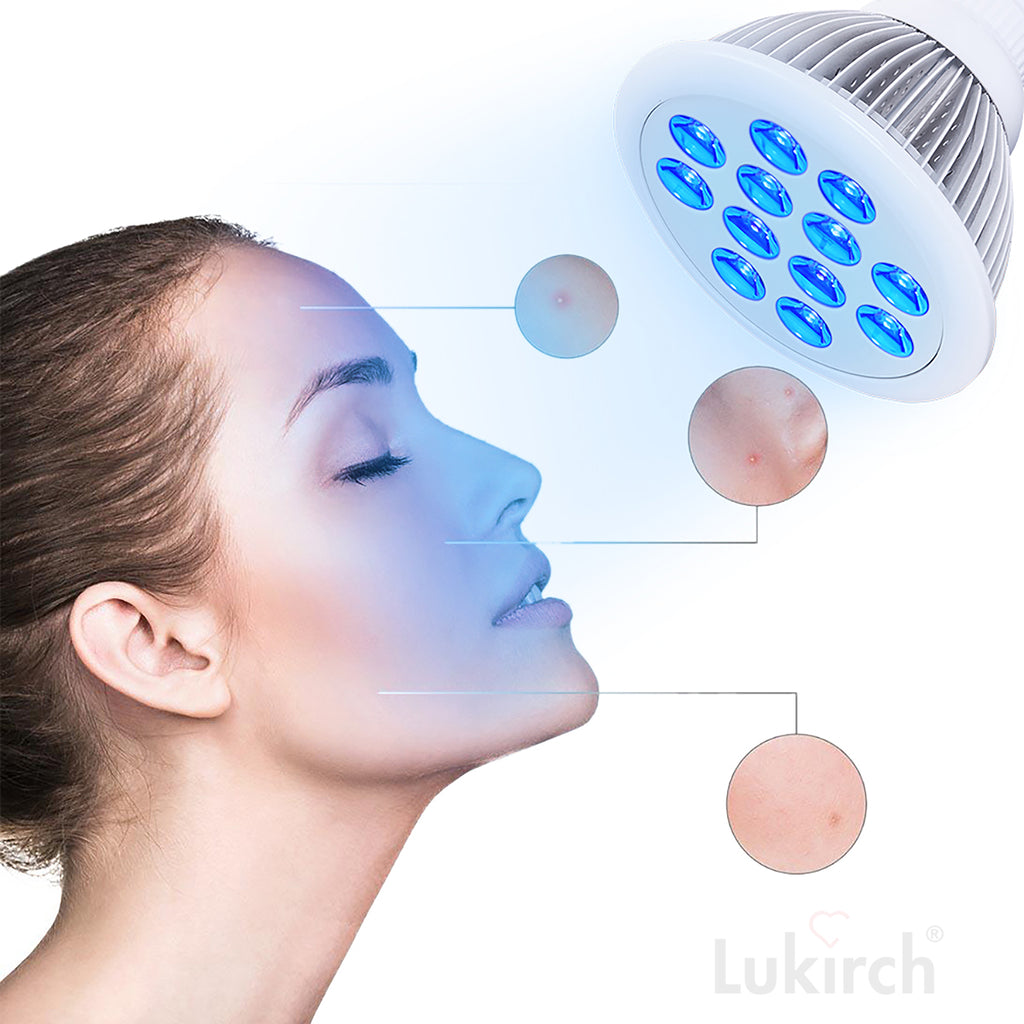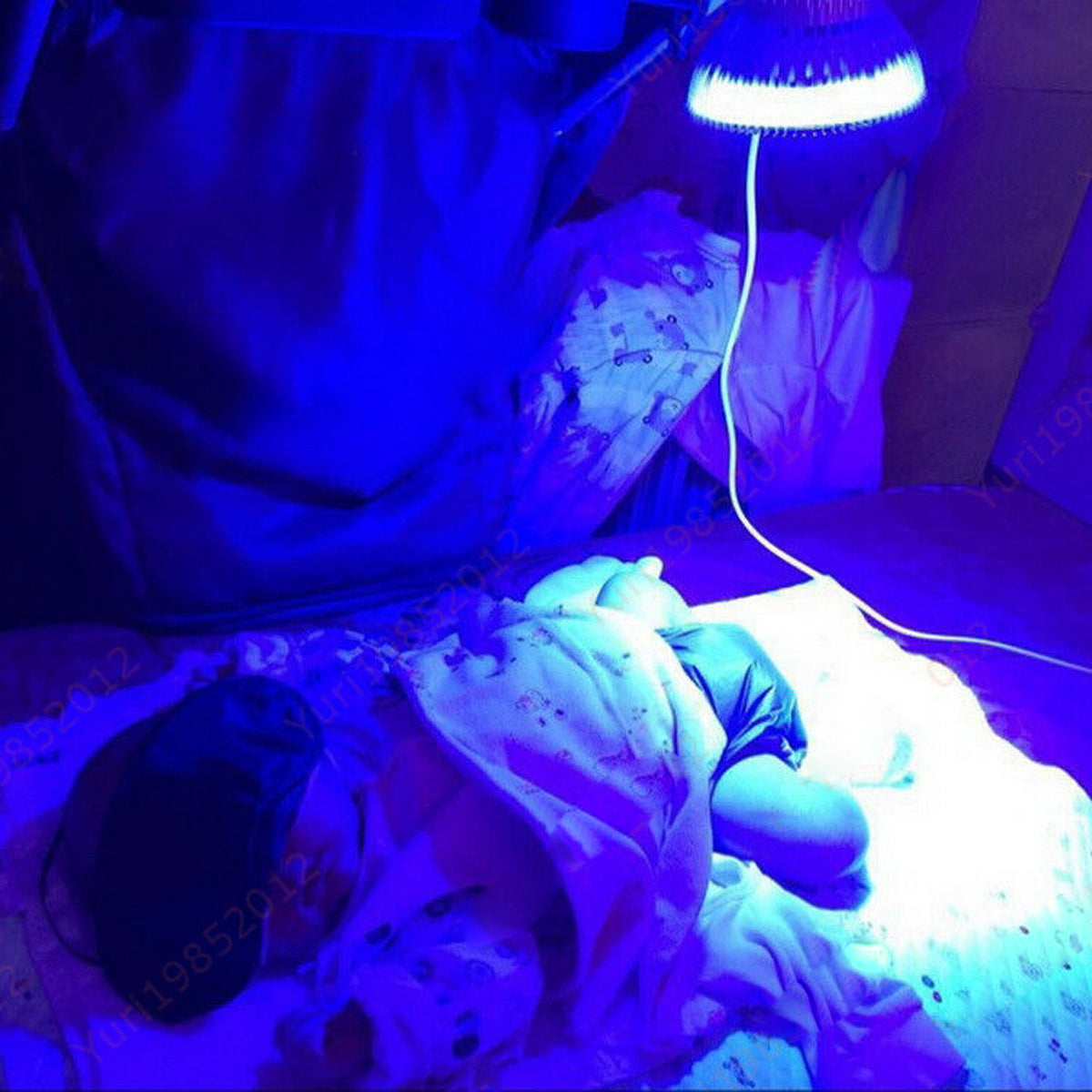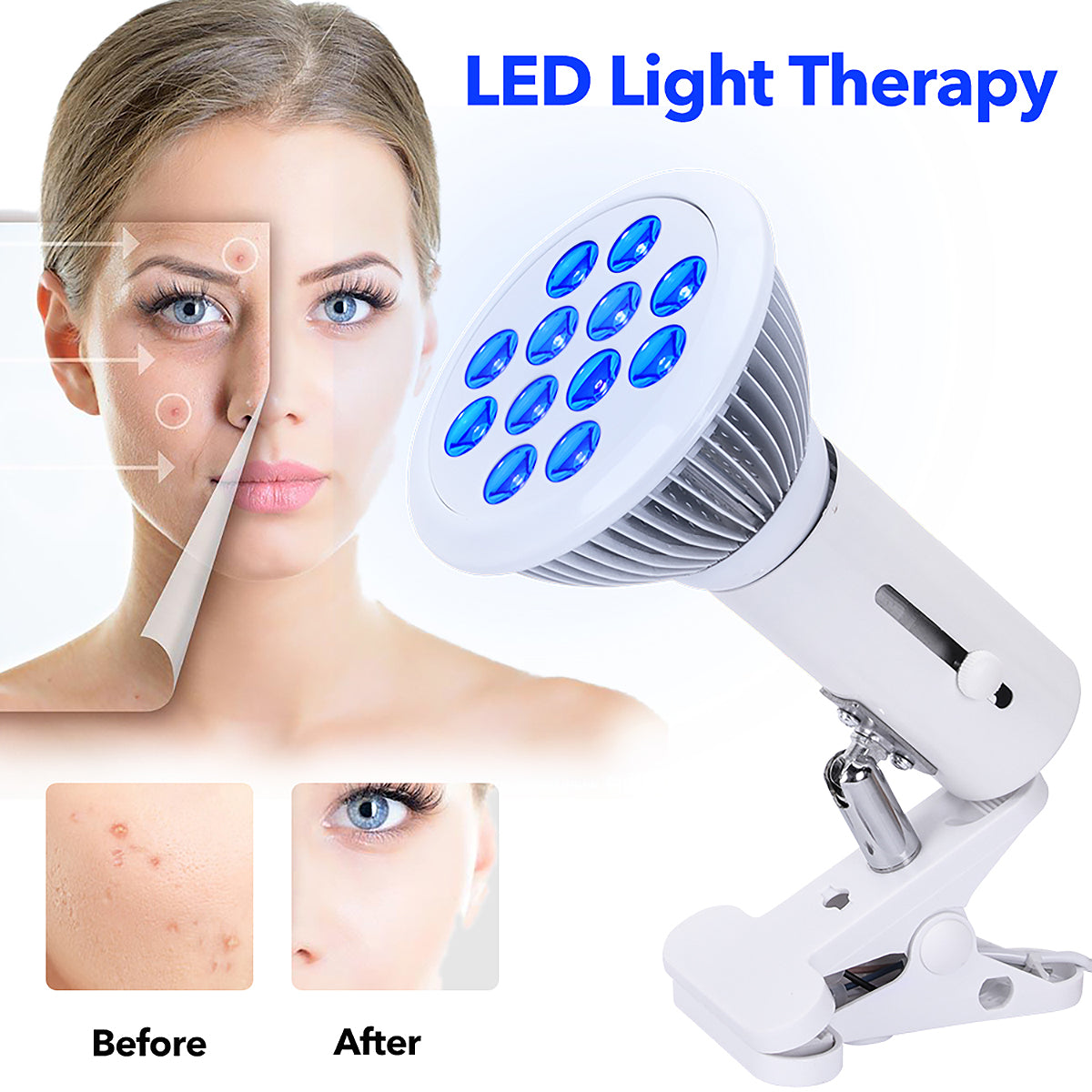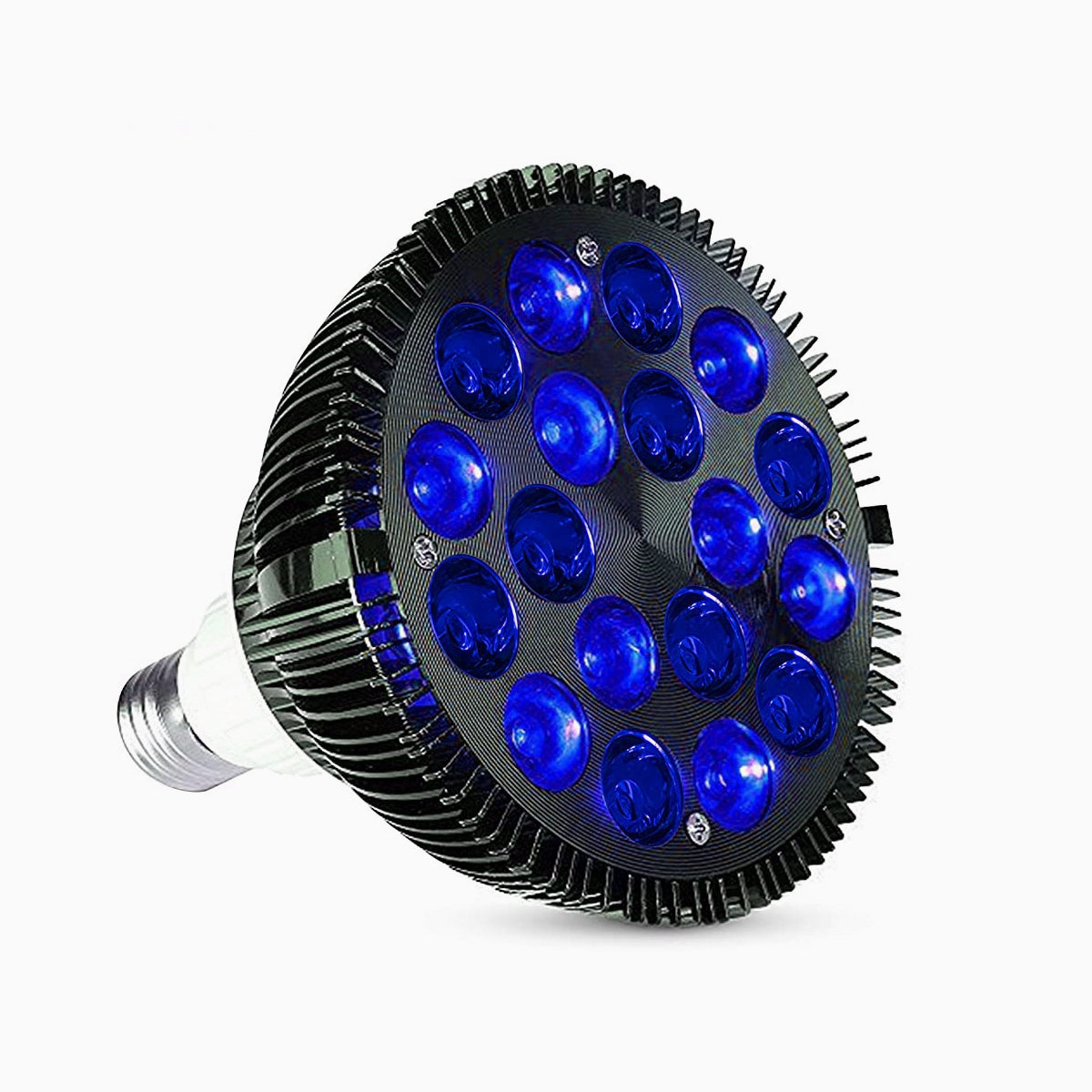Benefits of Blue Light Therapy Devices
Posted by GEGARY

Blue light is a part of visible light. It has a very important role in how our body adapts to light and dark cycles. Our modern lifestyle has increased our exposure to blue light, which gets a bad rap for straining eyes and disrupting sleep. But this natural wavelength of light isn’t all bad. Despite its negative effects, the adequate use of blue light has several therapeutic benefits. Keep reading below to learn more about blue light therapy.
Blue light therapy can help clear up acne, treat sun damage and non-melanoma skin cancers, break down bilirubin into products that are easily eliminated and is an approved therapy for jaundice in newborns. Let’s explain how it works and who can benefit from feeling blue.
What is Blue Light?
Light is electromagnetic radiation of a variety of wavelengths within the electromagnetic spectrum.There is both visible and non-visible light. Non-visible light includes ultraviolet (UV) and infrared light, while visible light includes the whole spectrum of the rainbow, including blue light. Within the visible light spectrum, each wavelength is represented by a color.
Of all the colors of the visible light spectrum, blue light (wavelength 446 – 477 nm) has the strongest impact on our physiology and circadian rhythm because the pigments in the skin and retina react to this wavelength.
So, how does it work?
1.For acne: Blue light kills the acne-causing bacteria known as Propionibacterium acnes, or P acnes, which can cause inflammation. P acnes is sensitive to blue light. Using the blue light, eliminates the bacteria found in the oil glands in the skin. The added presence of infrared light (heat) in the home device causes the oil glands to shrink in size. The result is less oil in the skin and less bacteria, leading to the resolution of acne in the treated areas.
2.For Jaundice in Newborns: Blue light therapy helps break down bilirubin into products that are easily eliminated and is an approved therapy for jaundice in newborns
3.For vegetable growth: Blue light helps with the plant's production of chlorophyll–the green pigment that traps light energy and is integral to photosynthesis. In other words, blue light is easier for a plant to absorb and use the energy in photosynthesis. So, blue light increases plant growth and makes the plant reach maturity faster.
4.For Aquarium. Fish and plants have their specific lighting needs for proper growth and development. Blue light is preferred by many aquarists worldwide due to its many benefits. It helps to mimic the natural environment of the fish and brings the aquarium to life. Blue lighting benefits the aquarium fish and plants in several ways, that is why it is preferred globally by many aquarists.
Health Benefits:
The effects of blue light on our body can be used to treat certain diseases. Photodynamic therapy is another method that combines blue light with drugs that activate within the blue light wavelengths.Effective for:
Jaundice in Newborns

Blue light therapy helps break down bilirubin into products that are easily eliminated and is an approved therapy for jaundice in newborns.
The effectiveness of the treatment depends on the penetration of the tissues by the light waves. Therefore, lamps with output in the 460 – 490 nm region are the most effective.
Therapy can either be standard or intensive, depending on bilirubin levels. The standard therapy uses daylight, white, or blue fluorescent tubes. Meanwhile, intensive therapy uses special blue fluorescent lamps or LED lights (430 – 490 nm)
If bilirubin levels are only slightly high, therapy is optional. The treatment can be administered at home, but bilirubin levels must be monitored regularly.
Depending on the cause of bilirubinemia, bilirubin levels can rebound after the treatment has stopped. Therefore, it is important to monitor them.
Sunlight is a natural source of blue light. It is not recommended that sunlight is used for phototherapy due to the risks of exposing a naked newborn to temperature variations and sunburn.
Type 1 Crigler-Najjar syndrome is a hereditary disease where the lack of production of an enzyme causes hyperbilirubinemia (caused by mutations in the UGT1A1 gene). While liver transplant is the only definitive treatment, daily blue light therapy may be used to manage the symptoms.
However, bilirubin is a powerful antioxidant. A very low-level can negatively affect newborns and cause chronic lung disease and brain injury.
Depression
Bright light therapy is approved to treat seasonal affective depression (SAD). In a study with 52 adults with SAD who received morning therapy for 10 days, blue light therapy was as effective as a bright light in diminishing the perception of depression symptoms.
In another study with 24 patients with SAD, daily morning blue light therapy for three weeks was more effective than red light for improving symptoms of depression.
Daytime use of blue-enriched white light helped improve sleep and decreases depression and agitation in patients with dementia.
Skin Problems
In some skin diseases like psoriasis, acne, and keratosis, immune cells at the baseline layers of the skin contribute to worsening symptoms. These cells (T cells) increase local inflammation and promote the formation of keratin-producing cells (keratinocytes).
Blue light is anti-inflammatory and decreases inflammatory cytokine (IL-1alpha) production. High-intensity radiation causes T cell death.
Acne
When skin bacteria (Propionibacterium acnes) are trapped in the sebaceous duct, the skin swells causing red spots, blisters, and eventually nodules and cysts. P. acnes can be killed by blue light. Application to the skin of patients with mild to moderate acne may also improve the wounds.
Other Skin Problems
Blue light therapy may help improve the symptoms of psoriasis, especially erythema.
Full-body blue light therapy helped treat atopic dermatitis and reduced itch in a study where 36 adults received five-day treatment cycles of radiation. Improvement persisted after two to three cycles.
Blue light also helped reduce eczema lesions when applied locally three times a week for four weeks in 21 patients.
There is no evidence for the treatment of stretch marks with blue light.
Some studies have found that blue light helps prevent wound infections without damaging the skin, while others have found it either helps or interferes with the wound healing process.
While promising, the evidence backing this application of blue light therapy is somewhat limited. You may try this therapy for your skin conditions if your doctor determines that it may help in your case.
Fatigue
Blue light reduced fatigue and daytime sleepiness in a clinical trial on 30 people who had suffered a traumatic brain injury when used daily for 4 weeks.
Blue-enriched white light helped regulate sleep disorders and increased alertness in a 9-week study with the 10 crew members of a polar station, who were under solar light deprivation.
In a study of 17 patients with restricted sleep, both dawn-simulating light and blue light used for two hours in the morning improved wakefulness and mood. However, only blue light helped regularize the circadian rhythm (by starting melatonin secretion and diminishing cortisol levels earlier in the evening).
Aquarium

Besides, lighting helps in regulating the eating and sleeping habits of the fish. It provides fish the all-important oxygen and energy. At the same time, in a planted aquarium, lighting helps to improve the health of the aquarium plants and corals.
The visible light spectrum consists of many colors. However, not all colors are equally important for the photosynthesizing inhabitants of the aquarium.
Blue light illuminates the aquarium and mimics the moonlight. It is used to mark the transition between dawn and dusk. Besides, blue light is calm, and it allows the edgy fish to venture out at night to search for food.
Nocturnal fish prefer dim blue light at night when they are awake. Blue light not only benefits nocturnal fish but at the same time allows the diurnal fish to rest at night. Also, blue light encourages more physical activity in the fish. It also becomes convenient to monitor the health of the fish and spot potential problems during the night.
Another benefit of blue light is that it does not contribute to excessive algae growth, which can be harmful to the fish. Lighting generally increases the water temperature, but it’s not the case with blue lights.
Blue lights do not increase the water temperature, and so monitoring is not required while the lights are on. If there are multiple fish with vibrant colors, blue light helps stimulate the red, green, and blue shades of color; thus making the aquarium look more exquisite.
Plants growth
First, plants do react differently to different colored lights. While blue light might not be as efficient as other wavelengths of electromagnetic energy, its presence is still necessary for the growing process. “Generally, only a low intensity of blue is needed in a light spectrum for fully functional photosynthesis”. Blue light is responsible for regulating the “stomata” of plants. Stomata are pores in the epidermis of leaves and stems in plants that facilitate gas exchange. These pores open and close to allow the intake of carbon dioxide and the discharge of oxygen. This feature is crucial for photosynthesis to occur, and therefore demands the presence of blue light.
That said, blue light often does suppress growth in some plants: “Plants grown with blue light are usually shorter and have smaller, thicker and darker green leaves compared to plants grown without blue light.” At first, this may seem like a disadvantage. Why would the use of blue light be beneficial if it has inferior growing capabilities? The answer: because the ability to have a regulating feature for inhibiting indoor or greenhouse growing is a never-before-seen innovation. Additionally, wavelengths can influence leaf coloration and promote vegetative growth. Blue light and shorter wavelengths can be extraordinarily useful in the development of compounds which increase the vitamin levels, quality, and overall healthiness of crops. Finally, blue light, serving as a regulator, can be used in conjunction with red light to increase the flowering of plants.
How to Use Blue Light Therapy
People should only use intensive blue light therapy in hospital settings due to the risks of overexposure. Home devices are safe for the treatment of low levels of jaundice, seasonal affective depression, fatigue, and acne.
The devices used for acne treatment are hand-held blue LED lights. You should use them in close contact with the skin for short periods of time (3 – 4 minutes on each area), as recommended by your doctor.
Most lamps used for treating seasonal affective depression and for adjusting sleeping patterns use white light. Yet, there are a couple of desktop blue light lamps on the market. You should use them in the morning for 20 to 30 minutes. You must position them at arm’s length and within the field of vision, and you should place the light within the peripheral field of vision. Again, consult how to best use them with your doctor.
Different types of delivery systems are being explored for patients with Type 1 Crigler-Najjar syndrome (who need full body exposure), as a blue light emitting mattresses or sit-up devices, to make the patients more comfortable and help them comply with therapy.
We provide below two blue light therapy lamp (24W, 54W), and would like to offer customized blue lamps per your special requirement.




Dror On
I would like someone to contact me.. I want to order the two kind of bulbs.. with 240v.. I live in Israel..